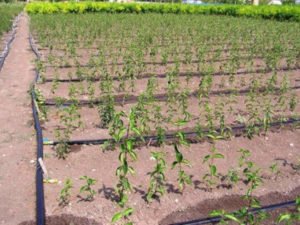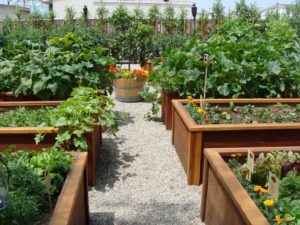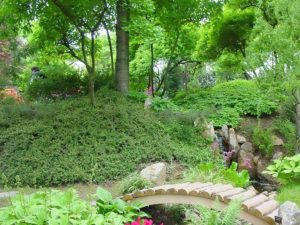
Rhubarb is a perennial herbaceous plant. They have powerful rhizomes with thickened branches. The stem is often shaped like a flower arrow, tall, straight, or curved. Large basal leaves. Their shape can be triangular, egg-shaped or round, the surface-bubbly or smooth, and the edges-wavy or smooth. The leaves are arranged on long fleshy stems, varying degrees of green or red, with wide triangular stipules. Depending on the variety, the petioles are colored completely or only at the base. Small, nondescript, whitish-pink, red, green flowers, collected in the inflorescence of a panicle, bloom in June-July from the second year of life. The fruits are nuts that ripen in August.
Especially decorative varieties:
- Rh. tanguticum var. tanguticum (young leaves are reddish-green, dark green with age, often with a purple tinge, white, pink or dark red flowers);
- ‘Atrosanguineum’ (the young shoots and leaves are dark red-purple, turning dark green with age, and the flowers are cherry-pink);
- ”Bowles Crimson’ (the flowers are dark red, the leaves are red below);
- ‘Victory’ (rosette of leaves with a diameter of 80-100 cm (2.6-3.3 inches), the leaves are very large, dark green, the color of the young stems is dark red, later green with a reddish-pink base);
Rhubarb is grown as a food, medicinal and ornamental plant. Suitable for eating young juicy stems and leaves. Petioles of a pleasant sour taste are collected, breaking from the second year of the plant’s life 3 petioles at a time (up to 6 times per season), compotes, jelly, puddings, marmalade, candied fruits, juices, jelly, and pie filling are prepared from them. Rhubarb leaves are used for making cabbage rolls.
For medicinal purposes, use the roots, rhizomes of the plant. They have a laxative (in large doses), astringent (in small doses), anti-inflammatory effect. Rhubarb is contraindicated in acute appendicitis, cholecystitis, peritonitis, bleeding, pregnancy.
A chic large shrub with decorative foliage will look great in shady places, for example, under trees, in the coastal moistened area of the reservoir. Since rhubarb is a cross-pollinated plant (that is, one flower is pollinated by the pollen of another), there is no point in collecting seeds. Therefore, it is recommended to remove the flower stalks so that the plant does not waste nutrients on their formation. The exception is the class that is most decorative during the flowering period.
In one place, rhubarb grows 10-15 (and even up to 20) years, but it is still desirable to update the planting every 4-5 years. Best seeding pattern: 80 x 80 cm/ 2.6×2.6 inches (for early varieties), 100 x 100 cm/ 3.3×3.3 inches (for medium and late varieties). At the same time, 6-7 seeds are sown in the hole, the depth of their embedding is 1.5-3 cm (0.6-1.2 inches). Rhizomes (when dividing the bush) are planted to a depth of 3-4 cm (1.2-1.6 inches). Rhubarb prefers fertile, deep, moist, non-acidic soils, but it should not be planted in low-lying areas.




Leave a Reply